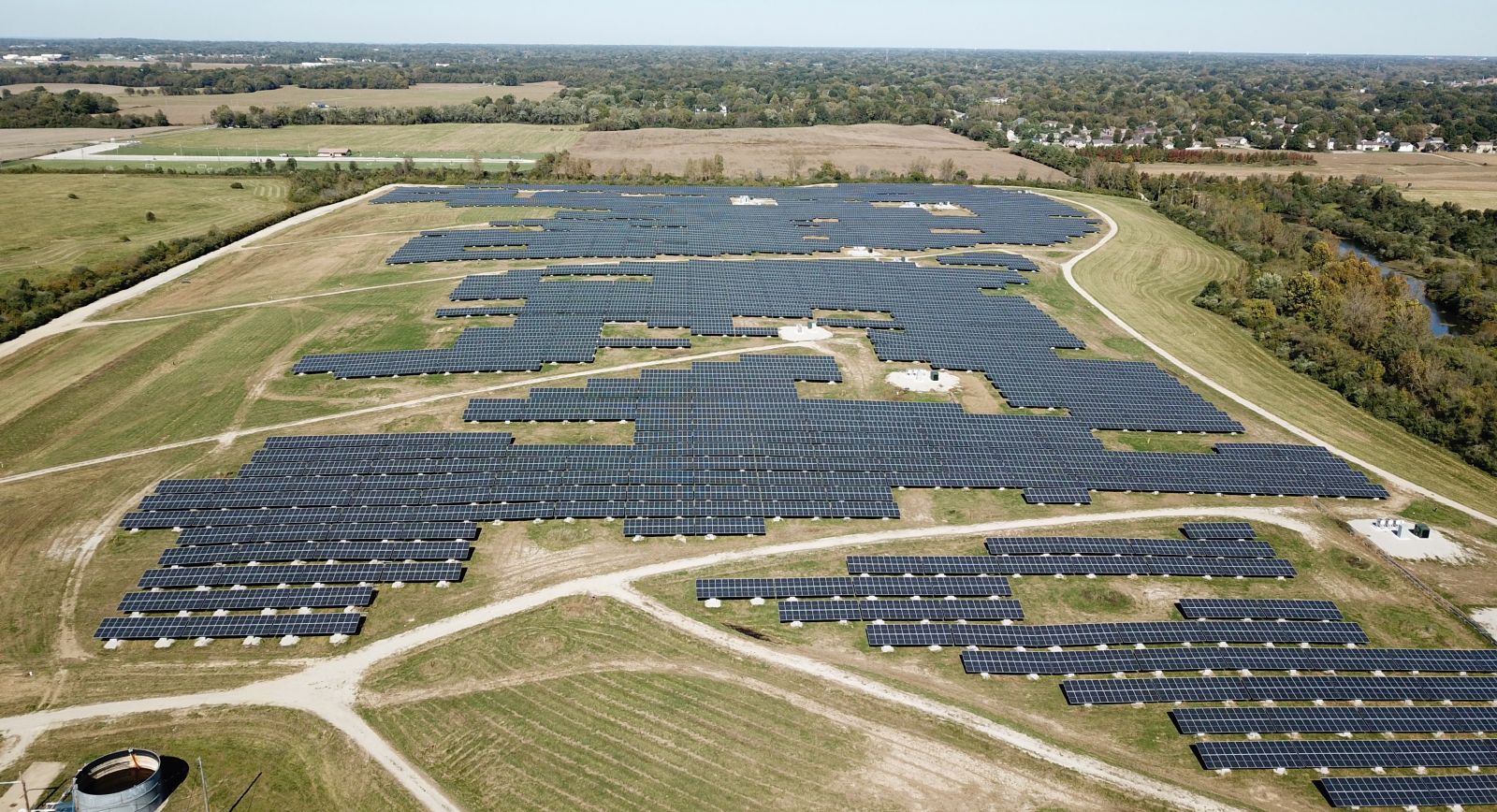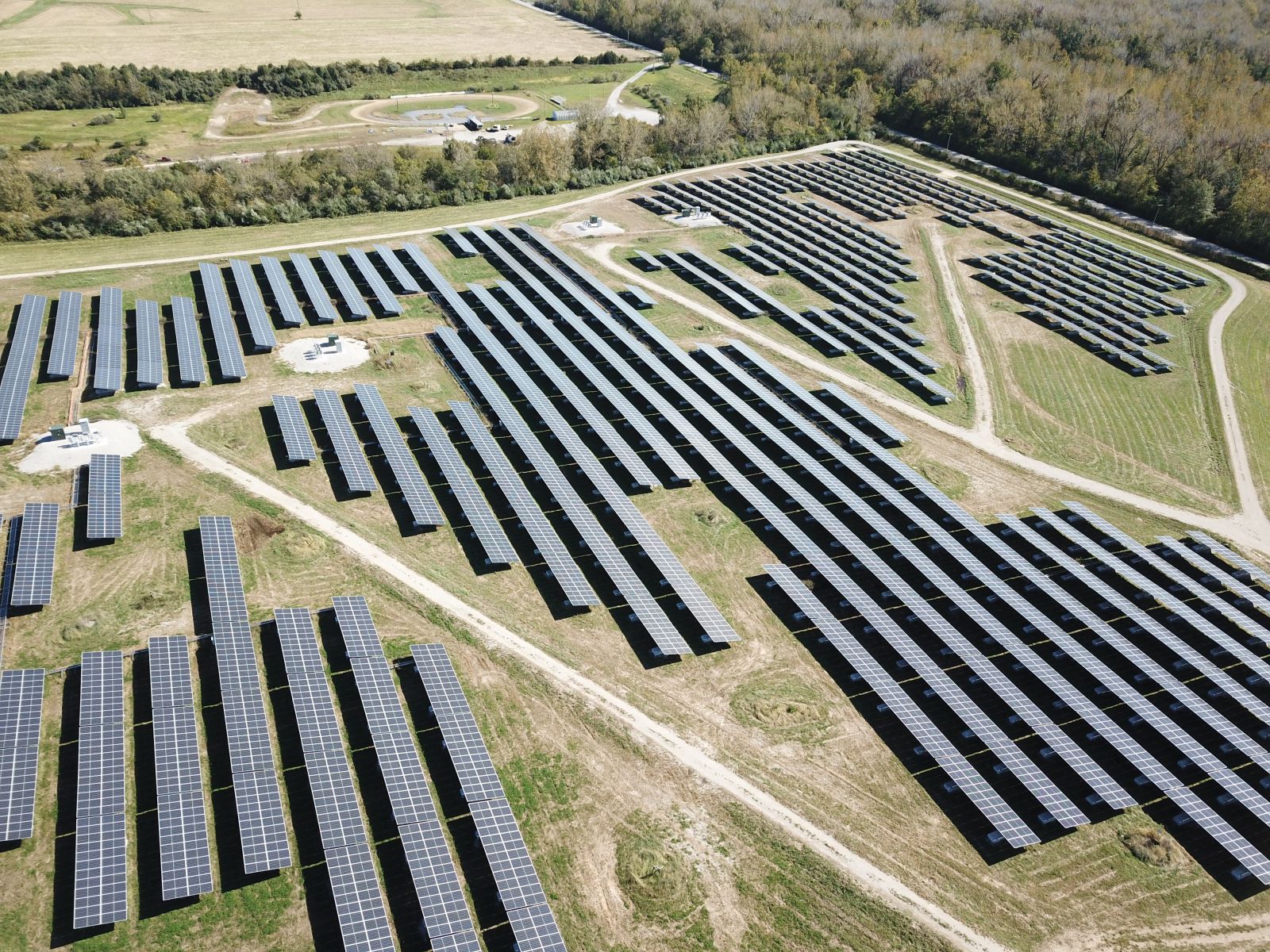From Landfill to Solar Farm: The unique challenges and opportunities of turning waste into a clean energy asset
What is one of the most intriguing U.S. solar development opportunities involving thousands of otherwise unusable sites ready for dozens of gigawatts’ worth of solar energy projects? The answer lies on often-forgotten, vacant acreage found in communities around the country: solar farms on capped and closed landfills.
Rocky Mountain Institute’s recent report, “The Future of Landfills Is Bright,” puts the solar market potential of capped landfills at 63 GW in the near future—enough generation of power to light up 7.8 million U.S. homes. Yet, so far, only 500 megawatts (MW) of solar projects on landfills have been built. Most of these are in Massachusetts, Connecticut, New Jersey and New York. States like California, Texas and Illinois have yet to see many of these landfill sites developed for their clean energy generation potential.

Landfill solar benefits and challenges
In addition to the obvious positives - clean energy, decarbonization, and pollution abatement - there are other benefits of solar farms on landfills. The projects create construction and operational jobs, put otherwise unused or underused land to productive use, generate tax revenues for local and regional governments, and provide lease revenues for landowners. These projects also typically avoid land-use restrictions and challenges from NIMBYism that derail some clean energy projects.
But developing, building, and interconnecting solar arrays on landfills is not a cookie-cutter endeavor—no two projects are engineered alike. Each project requires careful and consistent coordination among local governments and communities, property owners, utilities and developers, engineering, procurement and construction (EPC) firms and their subcontractors, as well as other stakeholders in order to reach a successful outcome. Developers and EPCs that have experience in successfully deploying solar on landfills can help ease the challenges. Collaboration and clear channels of communication are critical, especially between the utility, developer, and EPC engineering teams, all the way from design to permission to operate (PTO).
Don’t Mess with the Membrane
When planning a solar project on any closed landfill site, there’s one golden rule: the membrane or liner of the capped landfill cannot be breached or compromised in any way during the construction and operation of the PV (photovoltaic) array. The release of methane, carbon dioxide, or other hazardous materials from the closed landfill would be a nonstarter, both in terms of safety and the structural integrity of the system. Site earthworks and grading must be limited, ground settlement accounted for and avoided where possible, and site characteristics such as shading, flood plains, and terrain undulation must be engineered into the system.
With these limitations, landfill sites require thoughtfully designed PV systems that do not penetrate the ground on the capped area, starting with ballasted racking systems with low weight loads. Inverters, transformers, and other equipment must be positioned for both maximum system performance and minimal site disturbance. For some landfill projects, the grid substation should be located close to the site; trenching and cabling often has to skirt the edge of the landfill caps to reach the interconnection points.
Case Study: Belleville Solar Landfill
One of the more notable recent capped landfill solar projects is located in Belleville, Ill. The 13.3 MW-DC ballasted, fixed-tilt ground-mount system is one of the largest of its kind in the U.S. It was completed and connected to the local utility grid in late 2021, and is now generating enough electricity to power more than 2,160 area households. The project involved a sub-transmission interconnection, which is a high-voltage system that takes power from the higher voltage transmission system and reduces it to a lower voltage for more convenient distribution to nearby load centers.
Close Collaboration Is Key
 During the course of the Belleville project, frequent communication became critical to share expertise in large-scale solar design and understand interconnection requirements. It took a year of close collaboration to finalize specific technical requirements, such as protection schemes and relay settings, before the project reached PTO and the system was ready for witness testing.
During the course of the Belleville project, frequent communication became critical to share expertise in large-scale solar design and understand interconnection requirements. It took a year of close collaboration to finalize specific technical requirements, such as protection schemes and relay settings, before the project reached PTO and the system was ready for witness testing.
The Belleville project required the development of interconnection policies and procedures for the solar farm’s sub-transmission system, which feeds power to the distribution grid. Since the output of the Belleville facility was large, it had to be put on a 34 kV system, the backbone for all the distribution-level voltages that directly serve the utility’s customers. The ultimate goal was to ensure that the project would maintain high service reliability levels.
Another key challenge on the Belleville site involved the line electronic recloser, a utility-scale circuit breaker designed to disconnect the site from the grid after detecting abnormalities. The size of the project required adding the recloser, which is typically not needed in smaller, more standard solar plants. The team had to determine the range of potential anomalies the recloser needed to detect for the required settings to be finalized. This complex process helped to reassure the developer that the implemented protection schemes would be effective.
Unique EPC Challenges
Each capped landfill project presents its own set of unique engineering and construction challenges, and the Belleville site was no different. Here are some examples:
- Precast ballasted foundations were used to secure the arrays without penetrating the landfill.
- Eleven separate transformers were installed for this project to distribute the weight more evenly, rather than the one to three typically used for a non-landfill project of this size.
- Cable trays were employed instead of trenching or boring electrical wires.
During the construction process, the team had to be careful to not have any heavy machinery on the landfill site and work around the landfill cap. The facilities could only be built in designated areas, since trucks and equipment could only go through specific routes to install and maintain the facilities. Additionally, all the equipment to the site had to be transported using a specific type of dump truck instead of the cranes and larger trucks typically seen with non-landfill projects.
Lessons Learned
The larger-scale Belleville project reinforced the benefit of establishing a collaboration between the utility and an experienced solar EPC in order to refine the process and mitigate challenges. As more utilities work with solar projects of this size, a focus on safety at all stages is critical to the project success, from the planning and construction to the policies and procedures for the system to operate. Finally, close collaboration between the EPC, utility, and system owners is a key indicator of overall project success.
Mythri Anumula and Paul Guzowski are electrical engineers at Borrego. Borrego has spent the last 40 years developing, optimizing, delivering, and maintaining large-scale solar and storage projects. The Belleville project was developed and is owned and operated by The AES Corporation (AES). Republic Services owns the landfill. The project is connected to the Ameren Illinois utility grid.
Borrego | www.borregoenergy.com
Author: Mythri Anumula and Paul Guzowski
Volume: 2022 September/October









.png?r=4837)


